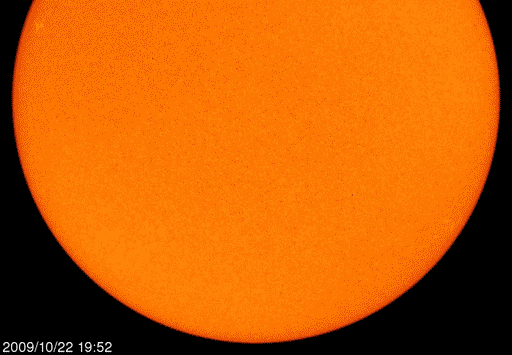
Here's a reminder never to look directly at the Sun, as doing so is dangerous and can lead to blindness. If you own solar eclipse glasses and you've taken good care of them (ensuring they have no holes or scratches), then it may be possible to see this sunspot. Another option is to look for the sunspot when the Sun's light is greatly diminished, as at sunset. However, as of this writing, the sunspot is very small and probably not visible to the eyes alone.
Sunspots usually appear in cycles of every 11 years. The last sunspot "storm", or maximum, was 2001, and we reached minimum in 2006. That means that sunspots should be starting to occur more frequently, as the next maximum is predicted to occur in 2012. This cycle has had an especially low minimum, so scientists are speculating that perhaps we won't have as many sunspots. (Famously, there was a period from 1645 to 1715 when the Sun produced very few sunspots, and some wonder if this may happen again!)
UPDATE: On Sunday afternoon (10/25/09) I attempted to see the sunspot using solar eclipse glasses (which are specially designed for safe viewing of the Sun) but could not see it. So at least for now, it's too small to be seen without special equipment.
No comments:
Post a Comment